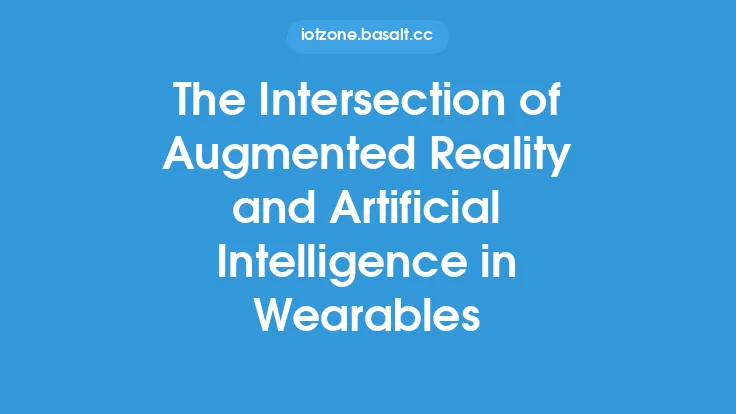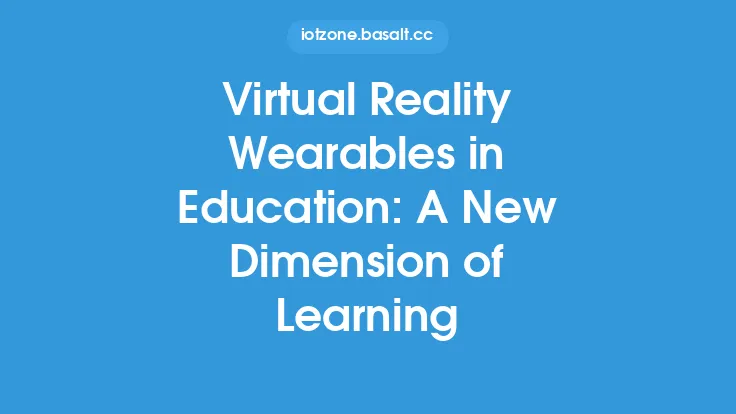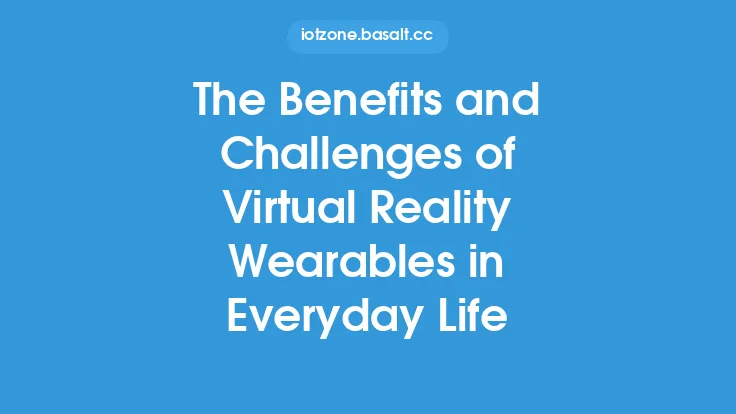The use of augmented reality (AR) wearables in education and training has been gaining significant attention in recent years. These devices have the potential to revolutionize the way we learn and acquire new skills by providing an immersive and interactive experience. AR wearables can overlay digital information onto the real world, allowing students and trainees to visualize complex concepts and interact with virtual objects in a more engaging and effective way.
History and Evolution of AR Wearables in Education
The concept of using AR in education dates back to the 1990s, but it wasn't until the development of wearable devices such as smart glasses and head-mounted displays (HMDs) that AR wearables began to be explored in educational settings. One of the earliest examples of AR wearables in education was the use of Google Glass in medical education, where students could use the device to access virtual patient data and receive real-time feedback during simulations. Since then, the use of AR wearables in education has expanded to include a wide range of applications, from language learning to vocational training.
Technical Requirements and Specifications
AR wearables for education and training typically require a combination of hardware and software components, including a display system, sensors, and a processing unit. The display system can be a see-through display, such as a head-mounted display (HMD) or smart glasses, or a non-see-through display, such as a tablet or smartphone. The sensors can include cameras, accelerometers, and gyroscopes, which provide data on the user's surroundings and movements. The processing unit can be a dedicated computer or a mobile device, which runs the AR software and processes the sensor data. Some popular AR wearables for education include the Microsoft HoloLens, the Epson Moverio, and the Vuzix Blade.
Applications in Education and Training
AR wearables have a wide range of applications in education and training, including:
- Language learning: AR wearables can be used to create interactive language lessons, where students can practice conversing with virtual native speakers and receive real-time feedback on their pronunciation and grammar.
- Science and mathematics: AR wearables can be used to create interactive 3D models of complex scientific and mathematical concepts, such as molecular structures and geometric shapes.
- Vocational training: AR wearables can be used to provide hands-on training in trades such as welding, plumbing, and electrical work, where students can practice tasks in a simulated environment and receive feedback on their technique.
- Medical education: AR wearables can be used to create interactive simulations of surgical procedures and patient care scenarios, where students can practice and receive feedback on their skills.
Benefits and Advantages
The use of AR wearables in education and training has several benefits and advantages, including:
- Increased engagement: AR wearables can increase student engagement and motivation by providing an immersive and interactive experience.
- Improved retention: AR wearables can improve student retention by providing a more effective and memorable way of learning complex concepts.
- Personalized learning: AR wearables can provide personalized learning experiences tailored to individual students' needs and abilities.
- Cost savings: AR wearables can reduce costs associated with traditional teaching methods, such as textbooks and equipment.
Challenges and Limitations
Despite the potential benefits of AR wearables in education and training, there are several challenges and limitations to their adoption, including:
- Cost: AR wearables can be expensive, especially for high-end devices with advanced features and capabilities.
- Technical issues: AR wearables can be prone to technical issues, such as glitches and bugs, which can disrupt the learning experience.
- Content creation: Creating high-quality AR content can be time-consuming and require significant resources and expertise.
- Accessibility: AR wearables may not be accessible to all students, especially those with disabilities or limited access to technology.
Future Developments and Trends
The future of AR wearables in education and training is likely to be shaped by several trends and developments, including:
- Advances in hardware and software: Improvements in hardware and software will enable more advanced and sophisticated AR experiences, such as higher-resolution displays and more accurate tracking systems.
- Increased adoption: As the cost of AR wearables decreases and their capabilities improve, we can expect to see increased adoption in educational settings.
- More emphasis on content creation: As the demand for AR content increases, we can expect to see more emphasis on content creation and the development of tools and platforms to support this.
- Integration with other technologies: AR wearables are likely to be integrated with other technologies, such as artificial intelligence and the Internet of Things (IoT), to create more seamless and interactive learning experiences.





